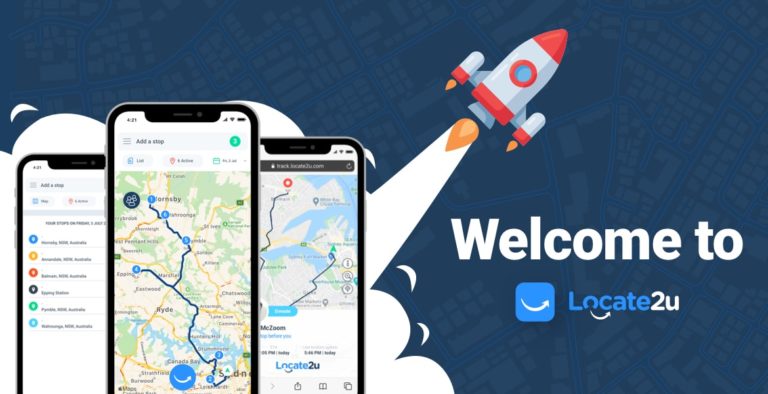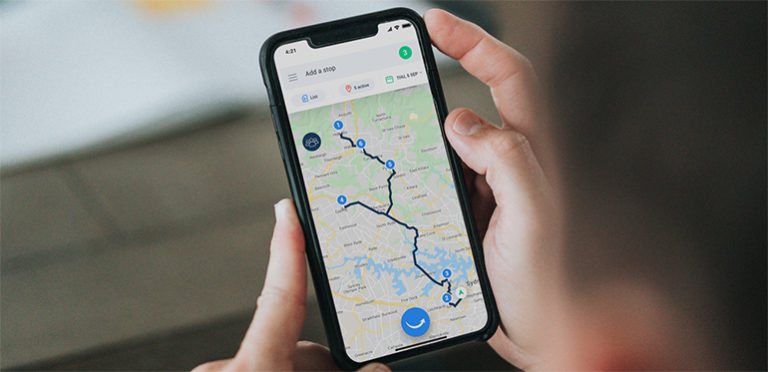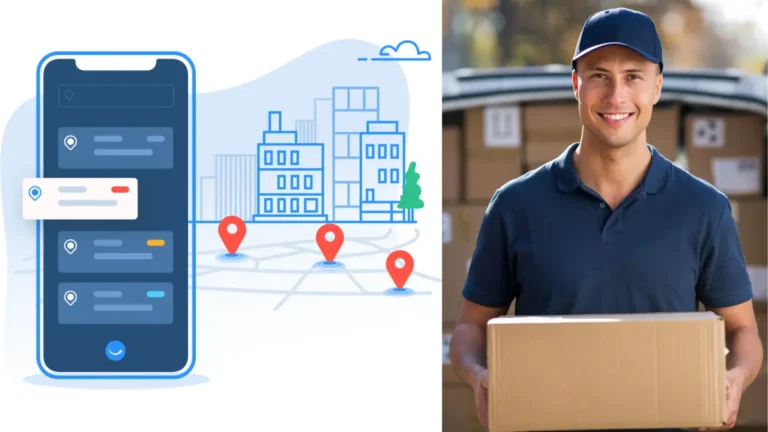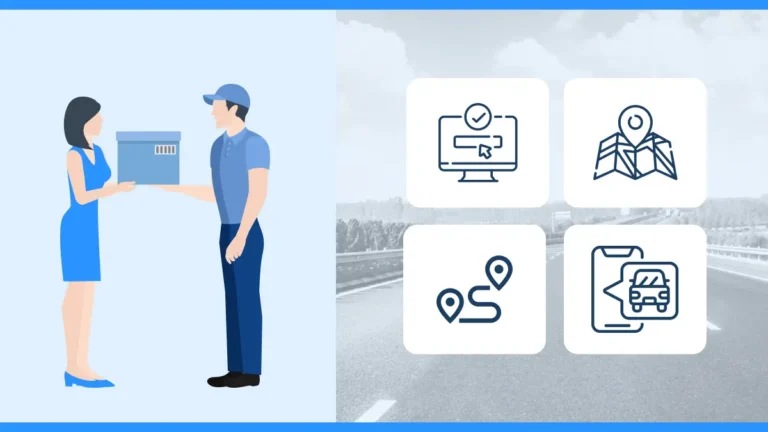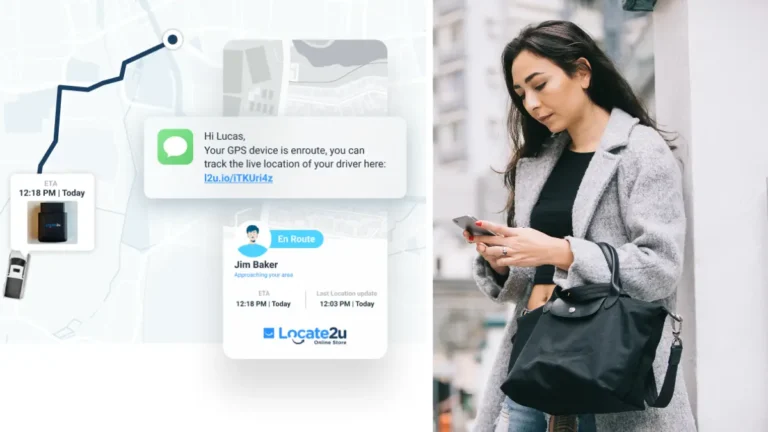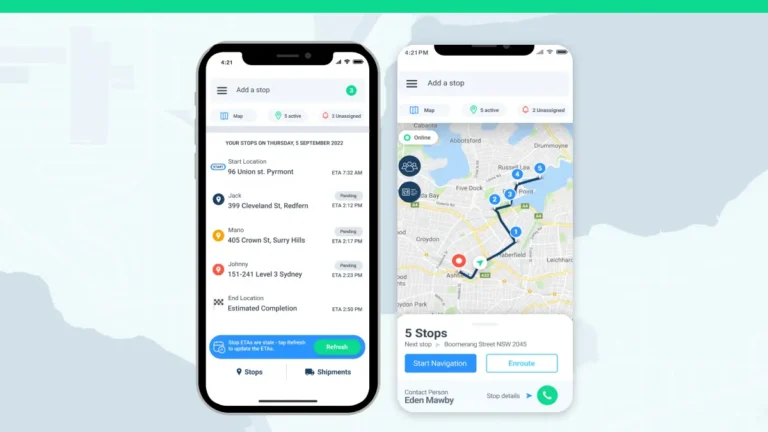It’s a bustling Saturday evening at your popular restaurant, and orders are pouring in faster than you can say “extra cheese.” Where is a driver app when you need it, you wonder.
Your delivery drivers are scattered across the city, each navigating traffic, customer requests, and the ticking clock.
Suddenly, a last-minute order comes in from a loyal customer.
How do you ensure timely delivery without disrupting your existing operations? A driver app could be the missing puzzle piece your logistics needs.
Fasten your seatbelt, climb into the driver’s seat, and let’s talk you through how a driver app can boost the way your team communicates.
Why a driver app is essential for modern fleet management
In today’s delivery landscape, effective communication between managers and drivers is paramount.
Traditional methods like phone calls or text messages are not only inefficient but also prone to errors.
Driver apps bridge this communication gap, offering real-time updates, streamlined processes, and enhanced operational efficiency.
Additionally, earnings from trips are automatically transferred to the drivers’ bank account on a weekly basis, ensuring financial transparency and convenience.
How a driver app enhances real-time communication
Picture this for a moment: You are in charge of fleet management for a logistics company’s delivery vehicles. A sudden traffic jam occurs on the main route.
With a driver app, you can instantly notify your drivers, reroute them, and keep customers informed about potential delays.
This real-time communication ensures that everyone is on the same page, reducing misunderstandings and improving service quality.
Additionally, features like Instant Pay allow drivers to transfer their earnings multiple times a day, providing them with financial flexibility and control over their income.

Key driver app features that keep your delivery team connected
Picture this: It’s Monday morning, and you’re managing a fleet of delivery drivers. The weekend hangover is real—not for your drivers, but for your systems.
One of your top drivers is currently delivering a package…somewhere.
His last text said, “Stuck behind a herd of goats on Main Street”. Meanwhile, your second driver was sent to the wrong address because you misread your chicken-scratch notes.
And your third driver? Well, they haven’t been heard from since they asked for directions to “Elm Road.” (You realize now it was supposed to be Elm Street.)
By the time you’ve tried calling, texting, and deciphering your own handwriting, your customers are blowing up your phone wondering where their orders are.
Chaos? Oh, absolutely.
What if all this madness could be solved with a tap on your screen?
That’s where a driver app swoops in to save the day. It offers features like live location tracking, instant messaging, and route optimization that make this Monday scenario a thing of the past.
The app also helps drivers plan a smarter schedule by identifying the busiest times to work.
Let’s break it down.
Live location tracking: Dude, where’s my driver?
Know where your drivers are at all times. This feature allows managers to monitor routes, anticipate delays, and provide accurate ETAs to customers.
Live location tracking can impact the phone’s battery life, but the app is optimized to reduce battery consumption.
Take some advice from an expert: In his book titled Delivery, Australian expert and founder of Zoom2u Technologies (ASX:Z2U) Steve Orenstein says: “I can’t repeat this enough: making sure the customer experience is good is more important today than ever before.”
Instant messaging: Eliminate the need for phone calls
Direct communication channels between managers and drivers eliminate the need for multiple phone calls, ensuring quick dissemination of information.
Additionally, the app allows drivers to utilize their free time effectively by taking on delivery jobs during their available hours.
Route optimization: Why it’s your delivery driver’s superhero
Driver apps can suggest the most efficient routes based on current traffic conditions, saving time and fuel.
Additionally, the app helps drivers manage a flexible schedule by suggesting the most efficient routes.
Order management: Instant notifications through the driver app
Managers can assign new orders directly through the app, and drivers receive notifications instantly, reducing lag time.
The app also allows drivers to be their own boss by choosing preferred deliveries and customizing their work experience.

How to implement a driver app in your delivery business
Transitioning to a driver app system might seem daunting, but the benefits far outweigh the initial setup efforts.
Start by researching apps that cater to your specific industry needs.
Ensure the app integrates seamlessly with your existing systems and provides user-friendly interfaces for both managers and drivers.
Here’s a scenario: You own a pizza parlor known for its quick deliveries.
One evening, multiple orders come in simultaneously, and one of your drivers encounters a flat tire. With a driver app, you can:
- Reassign orders: Quickly reallocate the stranded driver’s orders to others nearby.
- Notify customers: Inform waiting customers about potential delays, maintaining transparency.
- Assist the driver: Provide the stranded driver with nearby repair services or send assistance.
This level of coordination ensures minimal disruption and maintains customer satisfaction. Additionally, the app allows drivers to earn extra money flexibly and on their own terms.
Let’s recap: Why your business needs a driver app
Incorporating a driver app into your operations is no longer a luxury—it’s a necessity. The benefits are clear: improved communication, increased efficiency, and enhanced customer satisfaction.
The ease of registration and quick verification process through the Roadie Driver app makes it simple for drivers to get started.
Don’t let your business lag behind; embrace technology and watch your operations transform.
Driver apps offer a comprehensive solution, bridging the gap between managers and drivers, ensuring timely deliveries, and keeping customers satisfied.
About the author
Sharl is a qualified journalist. He has over 10 years’ experience in the media industry, including positions as an editor of a magazine and Business Editor of a daily newspaper. Sharl also has experience in logistics specifically operations, where he worked with global food aid organisations distributing food into Africa. Sharl enjoys writing business stories and human interest pieces.




